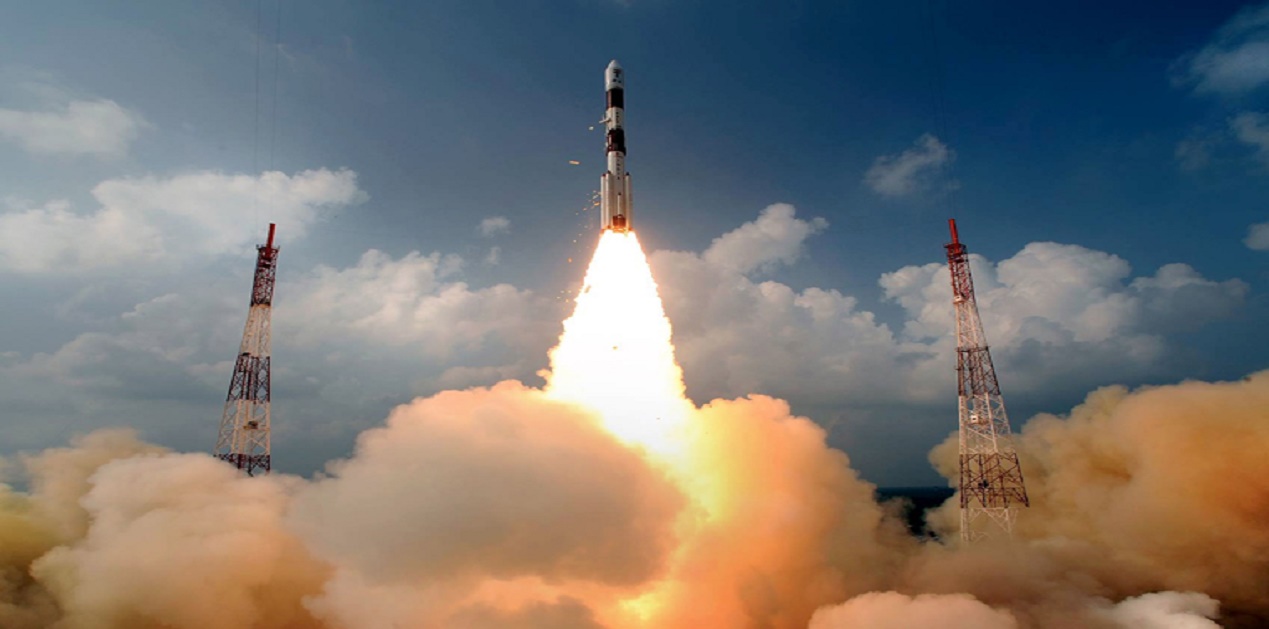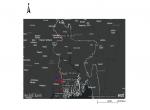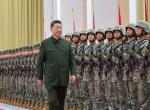General
There are many emerging trends in warfare, which impact the conduct of warfare, security structures and decision-making apparatus. These are driven by technology as well as dynamic strategic considerations. However, three of these in particular are especially relevant to the current geo-strategic environment. Firstly, separation between the tactical, operational and strategic levels of warfare is blurring. While, there was always some degree of overlap between these levels, but with the increasingly pervasive influence of information technology on warfare, this overlap is increasing. Secondly, on account of this blurring of distinction between the levels of warfare, the Observe, Orient, Decide, Act (OODA) loop needs to be traversed faster, while at the same time ensuring that the enemy cannot do so or has a slower loop. Thirdly, war-fighting has to be conducted in a more integrated and joint manner.
In this battlefield milieu, space-based capability will come to play a very critical role. Thus, in future wars, the capability to dominate and exploit space regime would make the crucial difference between victory and defeat. In the future digitised battlefield, space capabilities would act as a force multiplier and span across all domains of warfare. Moreover, there is a greater likelihood of limited and unexpected conflicts in future than all out wars. Hence, arises the need for a responsive, agile and economic space system for the military. Smaller satellites, which can be launched at a short notice, would therefore be required to fulfill the operational needs of the armed forces. Such a system is being referred to by various names like Launch on Demand (LoD) or Quick Response Mechanism (QRM) or Operationally Responsive Space (ORS).
Transformational Capability
LoD can be described as the ability to place satellites into orbit at a short notice during times of hostilities and operations. It includes development of command and control system, space launch vehicles, satellites and on board payloads. Presently, USA and China are believed to possess this capability. It focuses on providing quick-response tactical space-based capabilities to the combat troops, utilising small satellites and launch vehicles. Micro satellites (10-100 Kg) and mini satellites (100-500 Kg) are generally launched as part of LoD capability to enhance communication in inhospitable areas, provide surveillance (both electronic and visual) over an area of interest and replace satellites lost due to accidents/enemy action.
Micro and mini satellites are poised to perform tactical missions in the near future. Interestingly, such ‘Tacsats’ offer the best solution by combination of characteristics. LoD systems complement the Unmanned Aerial Vehicle (UAV) and traditional large satellites by adding an additional layer of tiered support, providing more cross platform mission opportunities. The unique design of LoD systems allows quick-response with selectable payloads to enhance coverage over the area of interest.
Operation Desert Storm conducted in 1991 is often referred to as the first space war,1 wherein satellites were used extensively for battlefield preparation, weather prediction, navigation and precision targeting. This demand will only increase in future wars and the need for rapid augmentation/replenishment of space assets will grow rapidly. The current system, which may be called ‘Launch on Schedule’ is thus not sufficient and would require responsive space lift. Hence, in the present global scenario, continuous protection of a country using space-based assets will rely on the ability to deploy assets at a short notice to achieve the element of surprise and the flexibility to cover the area of interest. The large fixed space assets must be complemented with a ‘tactical’ space capability. Thus, there is the need for a LoD capability.
To maximize the usefulness of a LoD system, it must include a quick launch vehicle, satellites with plug and play capability and data dissemination directly to the forces.
The ultimate objective of a LoD system is to provide the combat troops with a transformational space-based capability i.e. a low cost, quick response launch capability for a range of available payloads to enmesh with the theatre commander’s operational plans.
As a space-based asset, the LoD system will give necessary coverage to the deployed combat troops. An additional benefit of LoD capability is the ability for quickly fielding new technologies to counter emerging threats. Such a system is also a better match for today’s technology development cycle than traditional satellites.
Progress Made by China
While USA is the leader in this domain at the global stage, the progress made by China is more relevant to our security concerns. Hence, there is a need to focus on China’s capabilities in our context. China is engaged in extensive research for the development of micro/mini satellites with independent manoeuver and formation flying capability. On 25 September 2013, China launched Kuaizhou-1 (KZ-1)2, a quick reaction small satellite launch vehicle based on a modified DF-21 missile. China has also developed mobile satellite launchers and placed them under the PLA Rocket Force (PLARF). This provides China the capability to deploy mobile satellite launchers with their attached satellites at various locations to be launched within hours.
Relevance in Indian Context
The array of emerging global and regional complexities enjoin upon India to develop matching military capabilities in keeping with its growing economic and technological stature, so as to ensure a continued stable and peaceful environment. In the Indian scenario, the increasing span of conflict would range from sub-conventional warfare at the lower end, to all out war against a nuclear backdrop at the higher end. Thus, the likely duration of the war or the time available to the armed forces to execute their mission would be crucial for their planning and conduct of operations. The military would be expected to react quickly to arrest deterioration, enhance deterrence and diminish incentives for escalation. There would be heavy reliance on intelligence, surveillance and reconnaissance (ISR) for target selection and surgical strikes and precision-guided weapons would be the norm. Space technologies that can be deployed quickly would thus serve as key enablers for the armed forces to effectively play their mandated role in national security matrix.
The need for LoD capability in the Indian context is accentuated even more by the fact that China has embarked upon an elaborate counter-space programme. Having proven their direct ascent kinetic kill Anti Satellite (ASAT) capability in 20073, they are now in the process of developing non-kinetic Directed Energy Weapons (DEW)4 and kill satellites. Therefore, in order to prevent any degradation of military capabilities, there is a need to put in place a system to provide redundancy and augment our current space capabilities. Thus, a responsive satellite system is an operational necessity in the Indian context.
Methodology of Employment
a. Launch Decision: The theatre commander on ground should have the authority to harness the LoD capability with selectable payload for his theatre of operations from the Defence space Agency (DSA). Based on the assessed needs for the conflict, he should be able to choose from a set of payloads with a broad range of augmentation missions related to communication or ISR. He should provide the launch team with the key parameters including desired payload, area of interest, downlink location etc.
b. Launch Time and Deployment: Capability should exist to execute the launch within 72 hours of the receipt of order. An important facet of the LoD capability is the degree to which the satellite can be made autonomous through pre-programmed mission command and on-board processing. This autonomy will allow auto configuration of the selected payload, orbit maintenance, onboard processing and downlink to occur with no post launch inputs from ground. Thus, the process must make the satellite operational as quickly as possible.
c. Architecture: The paradigm for design of a LoD system demands reduction in satellite size and complexity. Smaller satellites will enable smaller, less expensive launch vehicle, which acts as the single most important factor for a truly responsive LoD system. Thus, the key to configuring the architecture of a practical LoD system is designing a small set of core satellite buses that can be plugged with selected payloads and the development of a robust and reliable quick reaction small satellite launch vehicle.
Strategic Benefits
LoD can provide an affordable capability to our armed forces to promptly, accurately and decisively position and operate military space assets. The greatest impact would occur when the adversary has offensive counter-space capabilities and LoD system can offset that advantage by maintaining our on-orbit capabilities. The envisaged payoffs of the LoD system to the armed forces are as under :
- Facilitate distribution of capabilities over many small and cost effective satellites.
- Make space assets an organic part of the theatre commands.
- Collectively, they will have a capability as good as or better than a single large asset.
- Highly resilient as loss of one satellite will not degrade performance.
- Counter the value of ASAT capability by the ability to replace damaged satellites.
- Diminish the efficacy of ASAT capability by distribution of payloads over multiple satellites.
- Enable effective tracking of adversary’s nuclear arsenal and ballistic missile launchers.
Way Ahead
To win the next war, we must prepare to respond to the adversary’s space and counter-space capabilities. The way forward is to develop an indigenous LoD system comprising a Small Satellite Launch Vehicle (SSLV) and micro-satellites with selected payloads. The fabrication of SSLV and micro-satellite by ISRO is a significant development in this direction and needs to be operationalised at the earliest. However, this entails development of micro-satellites with plug and play architecture for different payloads. Development of mobile launchers also needs to be accorded due priority.
Once developed, the LoD system must be placed under the operational control of the Defence Space Agency (DSA) and directly under command the Chief of Defence Staff (CDS).
The LoD capability will also have to be enmeshed with the existing joint war-fighting doctrines, training, exercises and operations to ensure integration of this concept with the existing security architecture.
The pursuit of LoD capability in isolation will not enable its effective employment by the military. Therefore, an investment in training including technical aspects of space warfare is critical for effective exploitation of the system.
References
- “Evolution of GPS: From Desert Storm to Today's Users.” US Air Force, Space and Missile Systems Center, 24 Mar. 2016, www.af.mil/News/ Article-Display/Article/703894/evolution-of-gps-from-desert-storm-to-todays-users/. Accessed 20 Apr 2021.
- “Kuaizhou Data Sheet.” Space Launch Report, www.spacelaunchreport.com /kz.html.Accessed 20 Apr 2021.
- Smith, Marcia. “The Chinese ASAT Test — Nine Years Later.” Space Policy Online, 11 Jan. 2016, spacepolicyonline.com/news/the-chinese-asat-test-nine-years-later.Accessed 21 Apr 2021.
- Cockburn, Harry. “China and Russia Developing ‘Destructive’ Weapons for Space Conflict, US Warns.” Independent, 14 Feb. 2018, www.independent.co.uk/news/world/americas/us-space-wars-russia-china -conflict-antisatellite-directed-energy-weapons-lasers-cia-fbi-a8211181.html. Accessed 21 Apr 2021.
(The paper is the author’s individual scholastic articulation. The author certifies that the article/paper is original in content, unpublished and it has not been submitted for publication/web upload elsewhere, and that the facts and figures quoted are duly referenced, as needed, and are believed to be correct). (The paper does not necessarily represent the organisational stance... More >>
Image Source: http://jyoti.us.com/wp-content/uploads/2015/03/news-110513a-lg.jpg


.jpg)








Post new comment